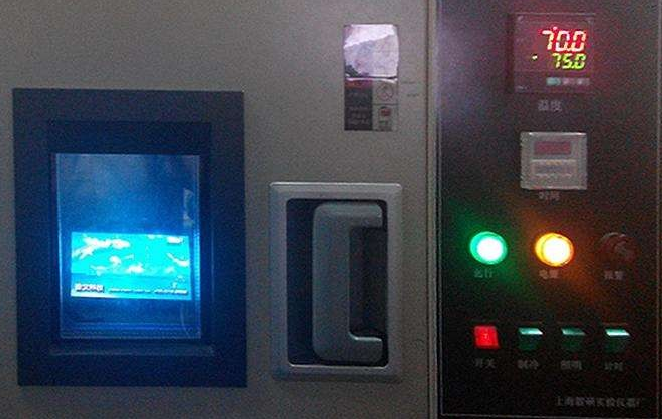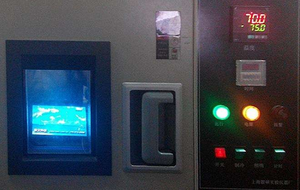
Testing standards for inspection of electroplating, painting and spraying processes. Inspection and verification services for factory audits.
In the production process of metal products, electroplating, painting and spraying are three crucial surface treatment processes. They not only give the products aesthetic appeal, but also provide protection functions such as rust prevention and wear resistance. As a professional inspector for the inspection company, one must be familiar with the quality inspection standards and certification requirements of these processes. This article will provide a detailed introduction to the inspection test standards for electroplating, baking paint, and spraying, offering a comprehensive technical guide for the quality certification of metal products.
I. Overview of Surface Treatment Process
1. Certification Points for Painting Process
Apply three coats of primer and four coats of topcoat on the substrate. Each coating is cured and dried in a dust-free and constant-temperature oven to ensure uniformity and adhesion strength of the coating.
2. Key Points of Spray Painting Process Certification
Using a spray gun or disc atomizer, under the influence of pressure or centrifugal force, the coating is dispersed into uniform and fine droplets, which are then applied to the surface of the workpiece to form a continuous protective film layer.
3. Electroplating Process Certification Key Points
The process of depositing a thin layer of metal or alloy on the surface of a metal using the principle of electrolysis, forming a metal film layer with functions such as corrosion resistance, wear resistance, conductivity, reflectivity and aesthetics.
II. Certification Standards for Surface Treatment Tests of Inspection Companies
1. Lightfastness (Fading) Test Certification
Test Method: Cover half of the test surface with opaque cardboard. Irradiate for 72 hours under a UV light source (wavelength 2800-3000 Å, 15W), with the lamp 25 cm away from the test surface.
Certification standard: No visible fading is allowed on the surface.
Factory inspection application: To verify the color stability of the product under long-term lighting conditions
2. Adhesion Test Certification
Testing Method: Select a 10×10mm area. Use a grid knife to create 100 1mm² squares. Apply 3M 600 adhesive tape (20mm wide) and firmly stick it. Then quickly pull it at a 90-degree angle.
Certification standard: The area of coating detachment shall not exceed 5%; it is strictly prohibited to reach the 10% detachment standard.
Importance of inspection: Ensure that the bonding strength between the coating and the substrate meets the usage requirements.
3. Wear Resistance Test Certification
Testing Method: Use a 1mm thick cotton cloth strip, apply a pressure of 1000g, with a friction distance of 30cm, and complete 500 reciprocating friction cycles.
Certification standard: The surface must not have any defects such as fading, peeling, or blistering.
Quality certification: Verifying the product's ability to withstand wear and tear during daily use
4. Weather resistance (high temperature and high humidity) test certification
Testing method: Placed in an environment with a temperature of 40 ± 3℃ and a humidity of 90 - 95%, for a continuous period of 48 hours.
Certification standard: The surface should be free from any deterioration, peeling, blistering or other undesirable conditions.
Factory inspection requirements: Testing the durability of the coating under simulated harsh environmental conditions
5. Pencil Hardness Test Certification
Testing Method: Use a 2H hardness pencil, apply a force of 1 kgf, and draw at a 45-degree angle for 6-7mm.
Certification standard: Visible scratches are not allowed on the surface.
Certification significance: Evaluating the surface hardness and scratch resistance of the coating
6. Chemical Resistance (Alcohol) Test Certification
Testing Method: Dip a piece of cloth in a 96% alcohol solution, apply a pressure of 500g/cm², and wipe back and forth 30 times.
Certification standard: The surface must not show any discoloration or peeling.
Inspection application: Testing the resistance of the coating to chemical solvents
7. Corrosion Resistance (Salt Spray) Test Certification
Testing method: 5% sodium chloride solution, 100% humidity, at 35 ± 1℃ environment, continuous spray for 24 hours
Certification standard: No corrosion, oxidation or detachment on the surface.
Quality certification: Verifying the rust and corrosion resistance performance of the product and the integrity of the coating.
8. Film Thickness Testing Certification
Testing method: Conduct precise measurement using a professional film thickness meter
Certification standards:
Wet film: 30 - 60 μm
Foundation application: 40 - 100 μm
Importance of factory inspection: Ensure that the coating thickness meets the design protection requirements.
III. Inspection and Certification Process Management
1. Sampling Inspection Standards
Carry out batch inspections in accordance with the AQL sampling standards
The key performance items will be subject to a stricter inspection plan.
Establish a complete testing record and traceability system
2. Defect Level Determination
Serious Defect: Any item that affects the protective function is strictly prohibited.
Main defect: Quality issues related to lowering product grade are strictly controlled.
Minor defect: Minor appearance flaws are accepted according to the standards.
3. Certification requirements
Provide the Material Safety Data Sheet (MSDS) for the coating material
Issue a test report from a third-party testing institution
Improve the production process control record files
Establish a quality traceability and certification system
IV. Key Control Matters for Factory Inspection Certification
To ensure that the quality of metal surface treatment consistently meets the certification requirements, during the factory inspection process, the following matters need to be given special attention:
Pre-treatment process control: Quality of pre-treatment procedures such as degreasing, rust removal, and phosphating
Process parameter monitoring: Key parameters such as temperature, time, and film thickness are recorded.
Environmental condition management: Requirements such as dust-free workshops, temperature and humidity control, etc.
Calibration of testing equipment: Regular calibration and maintenance of testing instruments
Personnel qualification certification: Professional training for operators and inspectors
Inspection and Certification Summary
The quality inspection of metal surface treatment is a highly technical and specialized field that requires comprehensive verification and certification from raw materials, process flow to final product performance. By strictly adhering to the aforementioned testing standards, enterprises can ensure that the quality of electroplating, painting, and spraying products meets the industry certification requirements.
Share this product

Testing standards for inspection of electroplating, painting and spray
In the production process of metal products, electroplating, painting and spraying are three crucial surface treatment processes.
